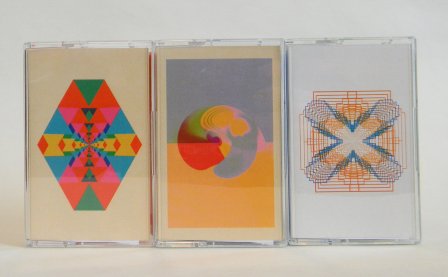The explosion in sales of modular synthesizers has created a sentiment of backlash in some experimental music circles. Perhaps the most common (and perhaps the strongest) argument against modular is the price: to achieve complexity beyond basic noisemaker, one could spend thousands of dollars to realize their vision. Many modular enthusiasts also compare their constant search for new modules to the most awful addictions, seemingly never satisfied with the limitations of their current setup. And it doesn’t help that they’ve become so ubiquitous. As a result, it’s inevitable that aspiring musicians would seek fancy gear in the hopes that it will make them more capable. Some musicians even believe gear will solve their creative problems, as if the ability to make a certain sound also includes the ability to place sounds in order. But the most creative musicians see instruments as simply tools for realizing something bigger. In the right hands, a tool like a thoughtfully-curated modular synthesizer is not a provider of specific sounds, but a surface of both possibility and limitation, the keys to usability in any instrument.
Brett Naucke’s Seed exemplifies this dual process in its very conceptual basis. All the sounds on Seed derived from not only the same modular synthesizer, but also the same patch (with slight tweaks and variations). This limitation probably sounds particularly rigid in text, but Naucke uses the restriction the way a painter uses a palette. Having found an appropriate array of colors, a painter creates artwork by blending them, darkening them, or “modulating” their intensity, filling the entire canvas using only a few pigments. This translates into a finite number of sonic elements that Naucke then transposes and shapes into a myriad of sounds, some classically musical, others noumenal and otherworldly.
But, crucially, Naucke succeeds most handily at placing this myriad in order. His careful use of layering and juxtaposition creates concrete relationships between the basic elements of his patch, forming a mutable lattice of intersecting sonic planes in the musical space of each track. From this initial state at the beginning of each of Seed’s movements, Naucke manipulates and morphs these relationships into new forms, sometimes fluidly adjusting the texture or pitch of a plane, sometimes expanding the negative space against them. That is, Seed’s individual tracks develop like shoots from a rhizome, pushing through the soil to the end of their possibility. The restrictions they meet shape their course, bending their routes toward new sources of novelty before eventually exhausting their potential energies and coming to rest.
Although chaos hides deep within Seed, it only rarely makes an appearance at its surface (usually as percussive sounds and rhythmic structures). Much of the album features highly musical, even melodious phrases, and careful use of musical quantizing in order to tame unruly vibrations. As in a living organism, the chaos within is generative, expressing itself through the physical impositions of structure only when, through careful perception, we uncover it. As such, Seed’s combination of the pure possibility of chaos with the limitations of the patch structure meet in a kind of fractal endlessness, its form clear and beautiful but its underlying process deeply complex.
Even the title encodes this duality: Seed could of course refer to the initial patch, the single seed from which the album grows, the genetic limitation Naucke has placed on the work; or it could invoke seed as a collective noun, revealing that though a handful of seeds may all derive from the same species, each individual plant that grows from it will live an irreducibly unique fate despite its heritage. Its possibilities, though limited by its position in space and its botanical ancestry, are impossibly complex by its very existence. Seed bears the fruit of Naucke’s careful gardening, guiding its potentialities through his musical lattice in a powerful symbiosis.
More about: Brett Naucke




